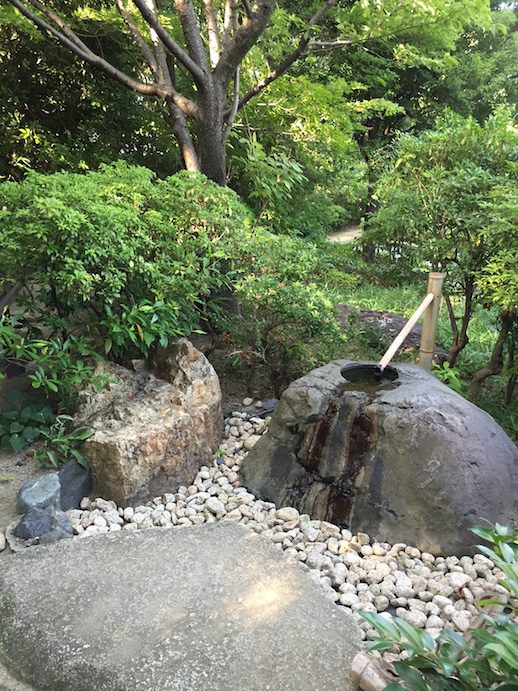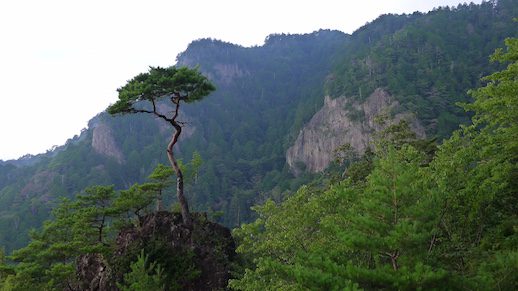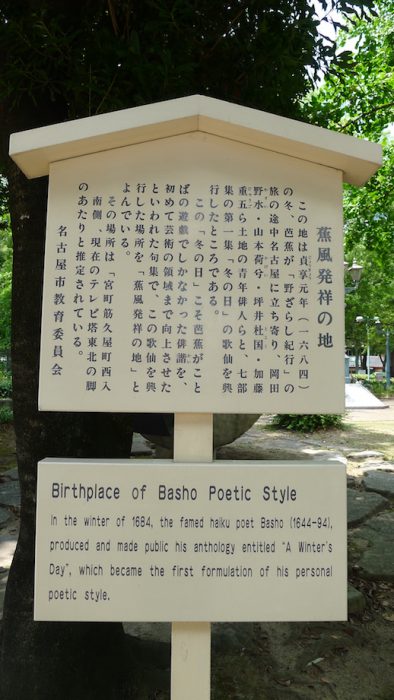You may have been wondering why our good friend and festival mainstay Chris Watson hasn’t yet put in an appearance at any of our summer events. This might have something to do with it…
*
The Seiu-tei tea house within the Shirotori gardens in Nagoya is closed today for a private function. That’s a serious blow on my arrival as it’s currently 36C. However I’ve come here in search of another creative use of water within this traditional Japanese Strolling Garden. The map indicates that close by a woodland edge in the north western corner, just by an arbour, there is a water harp or Suikinkutsu, a sound feature I have long wanted to experience in a Japanese garden. On the carefully arranged stepping stones across the Kiso river I pause mid stream to watch dragonflies hawking over the reed stems and listen to what appears to be a rural landscape that may have been here forever. In fact the Shirotori gardens are just 10 acres of meandering calm and contemplation, a hand crafted island set within a sea of pale urban concrete. The gardens were created less than thirty years ago to represent the landscape of the central area of Honshu in miniature and trace the journey of water from Mt Ontake to the sea at Ise Bay. Water, and running water in particular, is a key sound mark in Japanese gardens and temples.
Suikinkutsu are acoustic sculptures within the landscape. A large stone bowl is continuously drip fed with water from a slender bamboo pipe and the resulting overflow slips out onto a bed of pebbles, underneath which three clay jars are buried below ground level to catch the drops and produce brief, quiet, bell like tones which rise up through the stones in front of the listener. That’s the ancient theory and design, however today in the burning heat and high humidity the soundscape is totally dominated by the metal machine music of cicadas from all directions at almost threshold of pain level and the delicate water harp tones are inaudible. Thankfully the gardeners have supplied 1.5m long slender bamboo ‘listening pipes’ to focus one’s attention on the sounds from below.

The Shirotori Suikinkutsu
The Aichi 2016 Triennial here in Nagoya has invited over 70 artists from around the world to create and install new works in the cities of Nagoya, Okazaki and Toyohashi, all within the Prefecture of Aichi. The theme is Rainbow Caravan and I decided to create a sound journey following an approximate Great Circle route between Northumberland and Aichi. The 40 minute, 20 channel Ambisonic installation begins in the Cheviot Hills and ends by a Buddhist temple in the forests by Mt Horaiji. En – route are the Fjallsárlón glacial lagoon in Iceland, Orcas in the Arctic Ocean, Whimbrels over the Steppes of Kazakhstan, sand and insects of the Gobi desert, the Taiga forest and lakes of Siberia and Bearded seals singing in the Sea of Japan.

Mount Horaiji, Aichi Prefecture
After a journey of 5,800 miles, spanning 137 degrees of longitude from West to East to here, finally, in a park outside the gallery where I’m again recording insects, cicadas and a sound which was eloquently described centuries ago in this place by Matsuo Basho;
Stillness—
the cicada’s cry
drills into the rocks
Listen to Chris’s recording of the cicadas:
*
Chris joins us at The Good Life Experience, taking place 16-18 September in Hawarden, Flintshire.
